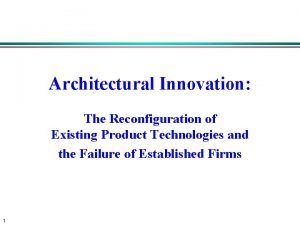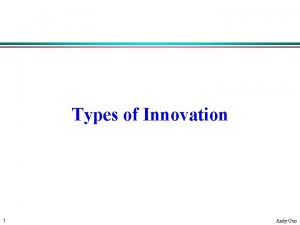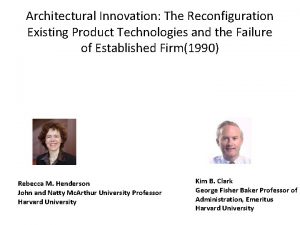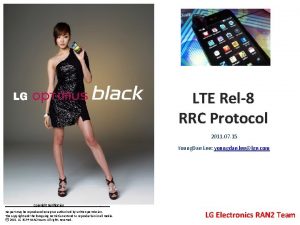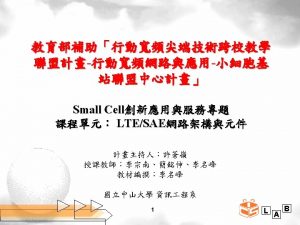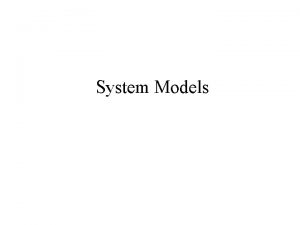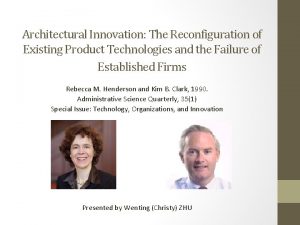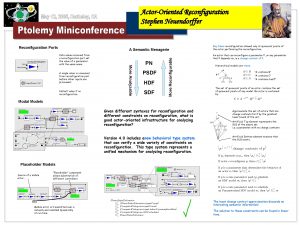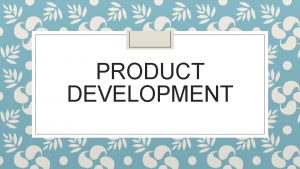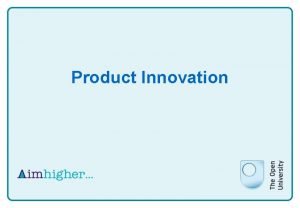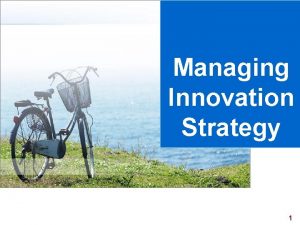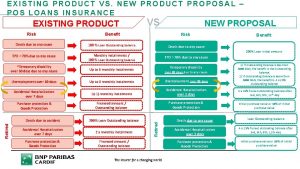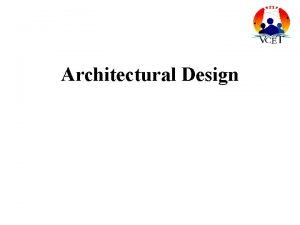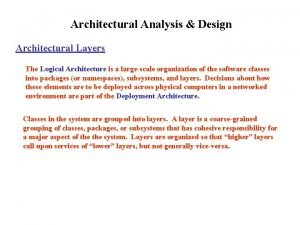Architectural Innovation The Reconfiguration Existing Product Technologies and


















- Slides: 18

Architectural Innovation: The Reconfiguration Existing Product Technologies and the Failure of Established Firm(1990) Rebecca M. Henderson John and Natty Mc. Arthur University Professor Harvard University Kim B. Clark George Fisher Baker Professor of Administration, Emeritus Harvard University

The Phenomenon The Xerox 914 copier was introduced at a trade show in New York City, on September 16, 1959. Establishing Xerox as a leader in copier technology. In the mid-1950 s engineers at RCA's R&D developed a prototype of a portable, transistorized radio receiver. The new product used technology in which RCA was accomplished

The Decline • Xerox – Competition from smaller copiers – Took Xerox eight years of mis-steps and false starts to introduce a competitive product into the market. – Lost half of its market share and suffered serious financial problems • RCA – Sony, a small, relatively new company, used the small transistorized radio to gain entry into the U. S. market – RCA remained a follower in the market as Sony introduced successive models – Sony's radios were produced with technology licensed from RCA

What explains the disastrous effects on industry incumbents of seemingly minor improvements in technological products?

Innovation: Traditional Categorization • Radical innovation establishes a new dominant design and, hence, a new set of core design concepts embodied in components that are linked together in a new architecture • Incremental innovation refines and extends an established design. Improvement occurs in individual components, but the underlying core design concepts, and the links between them, remain the same But are they sufficient to explain the phenomenon ?

Architectural Innovation • Unit of Analysis: Manufactured product sold to an end user and designed, engineered, and manufactured by a single productdevelopment • Architectural innovation: Innovations that change the way in which the components of a product are linked together, while leaving the core design concepts (and thus the basic knowledge underlying the components) untouched • Architectural innovation destroys the usefulness of a firm's architectural knowledge but preserves the usefulness of its knowledge about the product's components • A component is defined as a physically distinct portion of the product that embodies a core design concept and performs a welldefined function. This is the kind of innovation that confronted Xerox and RCA

Product as a System vs. Product as a set of Components • Successful product development requires two types of knowledge – Component knowledge: knowledge about each of the core design concepts and the way in which they are implemented in a particular component – Architectural knowledge: knowledge about the ways in which the components are integrated and linked together into a coherent whole.

Framework For Defining Innovation

Innovation Type and Firm Knowledge • Incremental innovation reinforces the competitive positions of established firms, since it builds on their core competencies • Radical innovation creates unmistakable challenges for established firms, since it destroys the usefulness of their existing capabilities • Architectural innovation: what the firm knows is useful and needs to be applied in the new product, but some of what it knows is not only not useful but may actually handicap the firm

Management of Architectural and Component Knowledge • Dominant design: Technical evolution is usually characterized by periods of great experimentation followed by the acceptance of a dominant design • Organizations build knowledge and capability around the recurrent tasks that they perform which are shaped by the organization's experience with an evolving technology

Managing Architectural Knowledge Channels, filters, and strategies • Organizational communication channels embody its architectural knowledge of the linkages between components • Organization develops filters allow it to identify immediately what is most crucial in its information stream • Organization's problem-solving strategies summarize what it has learned about fruitful ways to solve problems in its immediate environment Emerge to cope with complexity

Problems Created by Architectural Innovation • Information about architectural innovation screened out by information filters – rely on old beliefs about the world that a rational evaluation of new information should lead them to discard • Switch to a new mode of learning and then invest time and resources in learning about the new architecture Because architectural knowledge is embedded in channels, filters, and strategies, the discovery process and the process of creating new information (and rooting out the old) usually takes time

Empirical Testing • Context: photolithography alignment equipment industry – Empirical context different from the one where theory was evolved • Data: Panel data set consisting of research and development costs and sales revenue by product for every product development project conducted between 1962 and 1986 • Supplemented by a detailed managerial and technical history of each project • Amassed data cross validated by informed managers

Photolithography Alignment Technology



The Kasper Saga 1. Kasper introduced the first contact aligner to be equipped with proximity capability in 1973 2. The widespread use of proximity aligners occurred with the introduction and general adoption of Canon's proximity aligner in the late 1970 s. 3. Kasper conceived of the proximity aligner as a modified contact aligner. – The firm "knew“ – The Canon aligner was pronounced to be "merely a copy" of the Kasper aligner

Future Research • How the formulation of architectural and component knowledge are affected by factors such as the firm's history and culture • Examine the extent to which these insights are applicable to problems of process innovation and process development.
 Incremental innovation examples
Incremental innovation examples Modular vs architectural innovation
Modular vs architectural innovation Architectural innovation
Architectural innovation Rrc connection reconfiguration
Rrc connection reconfiguration Interface core
Interface core Basic bgp configuration
Basic bgp configuration Soft-reconfiguration inbound
Soft-reconfiguration inbound Mysite.socccd
Mysite.socccd Disruptive and radical innovation
Disruptive and radical innovation Quality and innovation in product and process design
Quality and innovation in product and process design Difference between batch sequential and pipe and filter
Difference between batch sequential and pipe and filter Explain conceptual framework of iot
Explain conceptual framework of iot Architectural styles and patterns
Architectural styles and patterns Internetworking concept and architectural model
Internetworking concept and architectural model Service ade 9500 systems
Service ade 9500 systems C&c pattern
C&c pattern Product life cycle kotler
Product life cycle kotler Relationship between total average and marginal product
Relationship between total average and marginal product Product line product mix
Product line product mix
